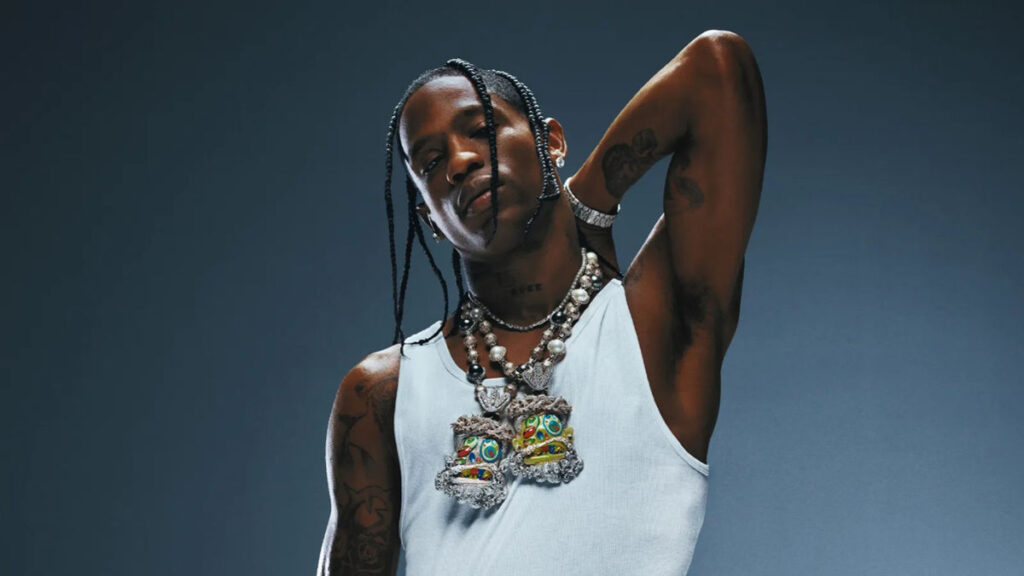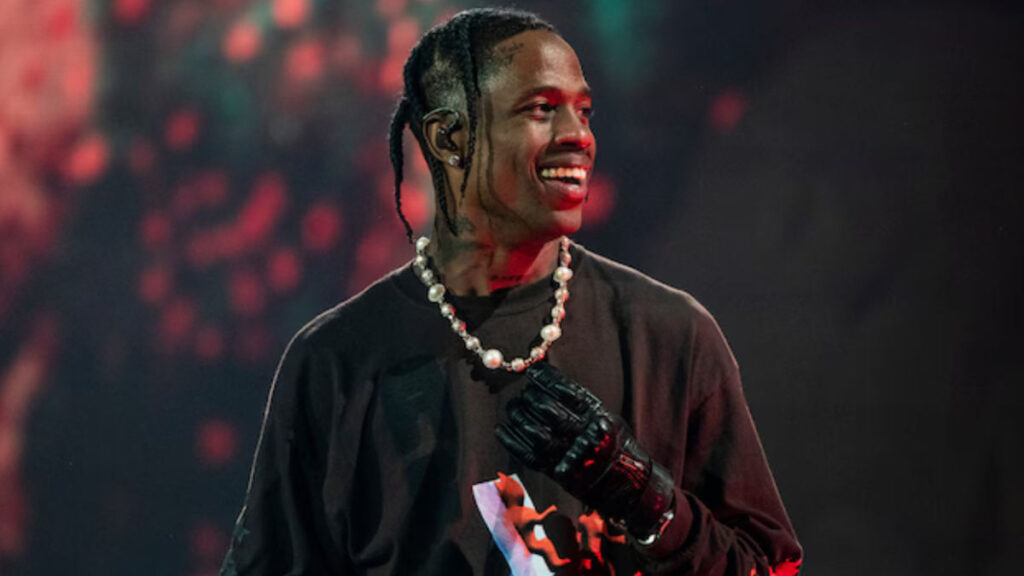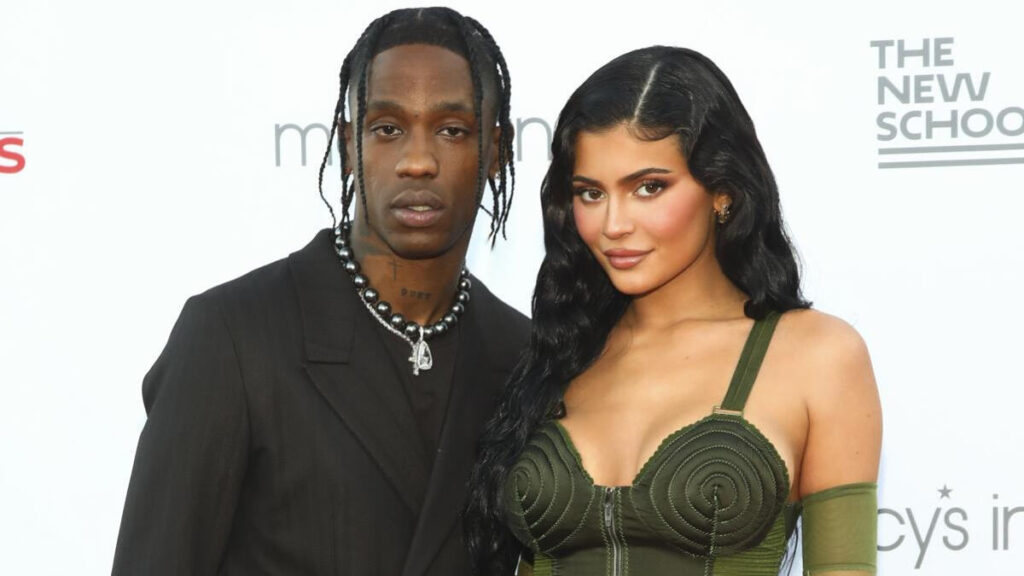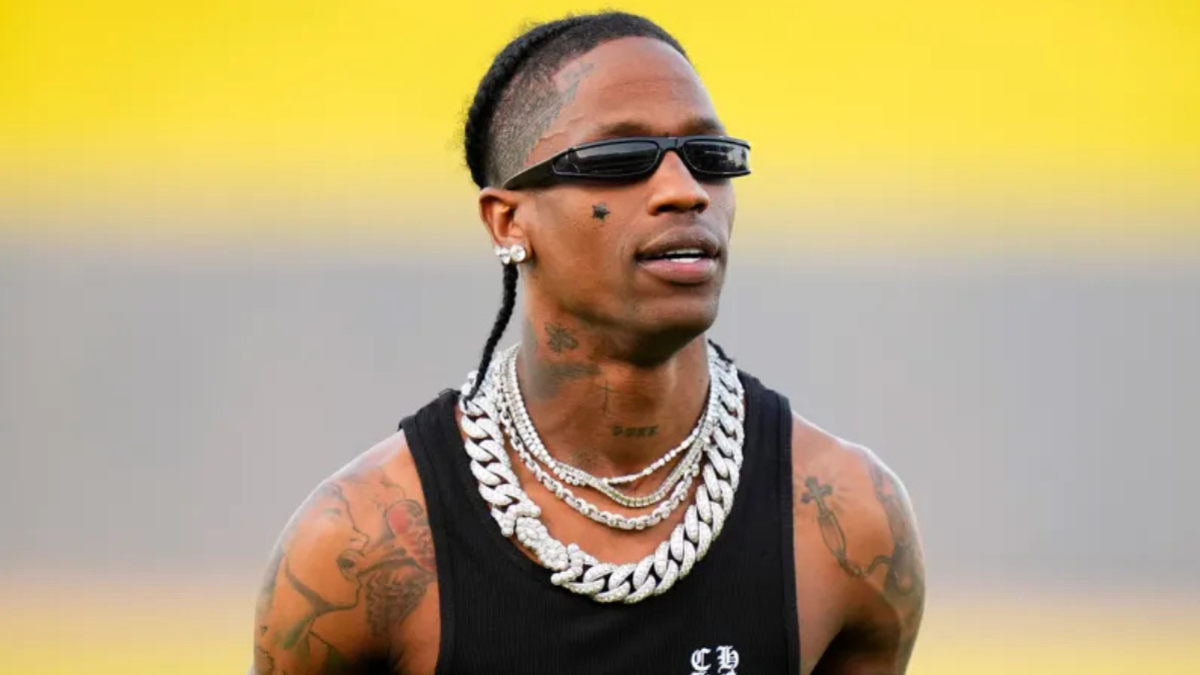The bass hits first, deep enough to rattle your chest. Then comes the fire, the smoke, the scream of a crowd that’s waited hours just to be near him. It’s 2025, and Travis Scott is headlining a sold-out show in São Paulo, laser-lit and larger than life. To fans, he’s the embodiment of chaos and cool; to brands, a walking economy.
But behind the pyrotechnics and the six-figure sneaker deals lies a fortune built, tested, and rebuilt. His estimated net worth this year? Roughly $80 million, depending on who’s counting—and how. That number didn’t arrive clean. It absorbed the backlash of Astroworld, the silence from sponsors, and the legal fog. It also absorbed resilience, reinvention, and deals that proved Travis wasn’t just another artist trying to go corporate—he was already the corporation.
This isn’t just about one rapper’s riches. It’s about how modern fame monetizes cultural chaos, and how one Houston kid transformed mixtapes and merch drops into a branded empire with staying power. Let’s trace the money, the missteps, and the master plan behind Travis Scott’s 2025 net worth.
The 2025 Snapshot – What Is Travis Scott’s Net Worth Right Now?
As of 2025, Travis Scott’s estimated net worth is approximately $80 million, a significant recalibration from previous highs but still a commanding figure in the entertainment industry. That number—sourced from a mix of industry analysts, Celebrity Net Worth, and updated earnings reports—reflects both the volatility of fame and the complexity of modern celebrity finance.
Compared to his 2023–2024 estimates, which hovered between $100–$120 million, this dip may look sharp—but it tells a more nuanced story. Several high-profile brand deals, including his once-lucrative partnership with Dior and the discontinued Cacti hard seltzer line, were either shelved or scaled back following the long tail of the Astroworld legal aftermath. Ongoing litigation and private settlements likely contributed to tightened margins.
Still, the $80 million figure doesn’t signal decline—it signals restructuring. Music royalties from Utopia, streaming revenue, and a leaner but still active collaboration with Nike/Jordan Brand kept income flowing. His Cactus Jack creative label continues to generate revenue from both music and merchandise, and real estate holdings in California and Houston remain a steady anchor.
In context, Scott’s net worth is stabilizing—not spiraling. He may no longer be in the nine-figure club, but his ecosystem remains intact. For a figure whose career has been marked by extremes, this chapter reflects something new: measured growth over flash, and the long game of financial endurance.
From SoundCloud to Superstardom – The Early Hustle That Fueled the Empire
Before the platinum plaques and global arena tours, Travis Scott was just a restless kid from Missouri City, Texas, uploading beats to SoundCloud and sleeping on friends’ couches in L.A. His early tracks buzzed with raw energy—unpolished but pulsing with ambition. In 2012, “Lights (Love Sick)” and “16 Chapels” started circulating on underground blogs, catching the ears of tastemakers who recognized something chaotic and compelling in his sound.
But it wasn’t just the music. It was the hustle. Travis knew how to build atmosphere—digitally, visually, sonically. That self-starter instinct led him to connect with T.I., then Kanye West, who brought him into the GOOD Music fold as a producer. These weren’t just co-signs—they were doorways. In 2013, Owl Pharaoh dropped and marked him not just as a beatmaker, but a solo force. It wasn’t an instant commercial hit, but it cracked open industry access.
Financially, those early years were lean. Advances went straight back into music videos and production gear. Touring small venues for modest fees, Travis built a live experience so volatile it started attracting headlines—and labels. His signing with Epic Records gave him the infrastructure to scale, but he never let go of the creative independence he carved out online.
Looking back, the financial seeds were already there: control over production, a clear visual brand, and the understanding that spectacle sells. What looked like chaos was actually architecture—an early empire in motion.

Astroworld Changed Everything – The Turning Point That Amplified His Wealth
When Astroworld dropped in August 2018, it didn’t just dominate the charts—it redefined the ceiling for what a hip-hop album could do commercially, culturally, and financially. The project debuted at No. 1 on the Billboard 200, moved over 500,000 units in its first week, and stayed in heavy rotation for months. But the album’s success was only half the story; it was the empire it unlocked that marked the real turning point.
The Astroworld: Wish You Were Here tour became a multi-sensory spectacle, complete with carnival rides and cinematic staging—grossing over $53 million across 32 U.S. shows. Merch drops tied to the tour became events in themselves, often selling out in minutes. Each hoodie and tee wasn’t just apparel—it was brand mythology in motion. Fans weren’t just attending shows; they were buying into an aesthetic.
Streaming revenue surged, with hits like “SICKO MODE” racking up over 1 billion Spotify plays, translating into multi-million dollar payouts. But perhaps most notably, Astroworld solidified Travis as a reliable cultural engine—one that brands could safely bet on. Within a year, Nike was deepening its relationship with him. McDonald’s came calling. Fortnite gave him a virtual stage watched by 12 million people live.
Astroworld was a business pivot disguised as an album. It proved that Travis Scott wasn’t just a rapper—he was an ecosystem, and the market responded accordingly.
Beyond Music – How Travis Became a Brand-First Mogul
Travis Scott didn’t just slap his name on products—he built immersive, hype-fueled worlds around them. In an industry where celebrity endorsements often feel like transactional noise, his partnerships stood out because they felt like experiences, not ads. Each one mirrored his chaotic, futuristic, slightly surreal aesthetic—and each one was rooted in calculated brand-building, not just fast cash.
Take the Nike Air Jordan collaborations. These weren’t standard-issue sneaker drops. From backward swooshes to earthy colorways and guerrilla marketing tactics, Travis injected his design DNA into every pair. The result? Instant sellouts, $1,000+ resale prices, and a position as one of Nike’s most lucrative creative partners. Insiders estimate his 2020–2023 Nike deals alone brought in over $10 million.
Then came the McDonald’s meal—a $6 combo that sold out ingredients nationwide and boosted the fast-food giant’s quarterly sales for the first time in years. More than a menu item, it was a cultural moment, blending meme energy with savvy merchandising. The accompanying Travis Scott action figure and apparel line? Gone in minutes.
The Fortnite virtual concert in 2020 became a benchmark for digital performance, watched by over 12 million live viewers and pushing new boundaries in gaming, music, and branded storytelling. Dior, Cacti seltzer, and the continued expansion of his Cactus Jack creative house further blurred the lines between artist and executive.
What unified all these moves wasn’t just star power—it was control. Travis reportedly had creative sign-off on everything from product design to promotional rollout. He wasn’t lending fame; he was licensing identity—and getting equity in return.
Setbacks and Resilience – Financial Fallout and Recovery Post-Astroworld Tragedy
The 2021 Astroworld Festival tragedy marked a devastating chapter in Travis Scott’s career, both human and financial. With 10 people killed and hundreds injured during his headline set in Houston, the fallout was immediate and far-reaching. Lawsuits totaling billions in potential liability flooded in. Major partnerships, including Dior and Anheuser-Busch (producer of his Cacti hard seltzer), were paused or quietly dissolved. His net worth, once in rapid ascent, plateaued under the weight of uncertainty and reputational risk.
From a financial standpoint, the impact was severe but not irreversible. Insiders say brand deals accounted for more than 50% of Travis’s income in 2020–2021, so the sudden freeze dramatically slowed cash flow. Legal settlements and litigation costs—not all of which are public—further strained liquidity.
But the rebuild began, carefully. Travis issued statements, funded relief efforts, and launched Project HEAL, a $5 million initiative aimed at concert safety and community support. While critics debated the sincerity, it signaled a pivot toward responsibility and repair. Behind the scenes, his team worked to restructure deals with tighter brand alignment and long-term equity plays rather than short-term promotional bursts.
The clearest sign of recovery came with 2023’s Utopia album and world tour—critically divisive but commercially potent. Nike returned. The Fortnite concert re-aired. Public perception hadn’t fully reset, but in the world of celebrity capitalism, Travis Scott demonstrated a hard truth: redemption, when monetized strategically, can also become part of the business model.

Keeping Up with the Heavyweights – How Travis Scott’s Net Worth Stacks Up
In 2025, Travis Scott is rich, but in the hierarchy of hip-hop moguls, he’s still climbing. With an estimated net worth hovering near $80 million, he sits behind industry titans like Drake (estimated $300 million), Kanye West (despite major fluctuations, still rumored to be in the $400 million range post-Adidas fallout), and The Weeknd (estimated $300 million, boosted by catalog sales and global touring). Even ASAP Rocky, while lower in raw earnings, has carved out a powerful fashion niche with Bottega Veneta and Fenty collaborations.
Where Travis stands out is in the synergy between brand and lifestyle. Unlike Drake, who leans heavily on streaming and touring, or Kanye, whose fortune has been defined by ownership in Yeezy and bold (sometimes volatile) ventures, Travis blends influence with execution across music, merchandise, gaming, and fashion. His Nike collaborations rival Yeezy in cultural cachet, even if not in valuation. His Fortnite and McDonald’s partnerships became case studies in Gen Z marketing.
That said, Travis hasn’t sold his catalog (as The Weeknd and Justin Bieber have), nor has he launched a standalone tech or fashion empire. His model is cultural fluidity—plugging into platforms that extend his world, rather than owning entire verticals. He’s not the wealthiest in his circle, but he may be the most brand-adaptable—and in 2025’s creator economy, that might prove more lucrative in the long game.
The Money Mindset – How Travis Views Wealth, Legacy, and Longevity
Travis Scott doesn’t often talk explicitly about wealth—but when he does, it’s not about luxury. It’s about legacy. In a rare 2021 interview with i-D Magazine, he said, “I’m thinking about how to build generational experiences, not just generational wealth.” That line, understated as it was, revealed something deeper: for Travis, money isn’t just currency—it’s cultural architecture.
Much of his public financial philosophy is implied through action. The launch of Cactus Jack Records wasn’t just a vanity imprint—it was a talent incubator. He’s mentored younger artists like Don Toliver and Sheck Wes, giving them both a platform and a pathway. That’s not just business—it’s legacy engineering.
Fatherhood also shifted his trajectory. Since the birth of his daughter, Stormi, in 2018, and later his son, Travis has appeared more focused on sustainability, not just spectacle. His investments in real estate, long-term brand equity (Nike, not fast fashion), and community programs suggest a growing interest in stability over flash.
He hasn’t sold his music catalog—a common cash-out move for artists, which signals a belief in long-term ownership. He’s betting on himself over time.
In a landscape where many artists chase short-term gains, Travis seems to be asking bigger questions: What’s left after the tour ends? What does your name mean once the fame fades? The answers may not be loud, but his choices speak volumes.
What’s Next? Projected Growth Through AI, Tech, and Future Collaborations
Travis Scott has never just followed trends—he’s often invented the lane. And if his trajectory holds, the next chapter of his empire could unfold in the fast-evolving intersection of music, tech, and immersive media.
Already a pioneer of virtual performance with his groundbreaking Fortnite concert in 2020, Travis is rumored to be exploring partnerships with AI-driven music platforms, experimenting with generative audio to expand his sound without overextending his time. While not officially confirmed, industry insiders suggest Cactus Jack’s creative wing has been quietly investing in AI tools that could revolutionize how he produces and releases content.
There’s also talk of a second wave of NFT collaborations, this time with utility beyond artwork—think token-gated fan access, exclusive merch drops, and live-streamed studio sessions for holders. After sitting out most of the 2022–2023 crypto crash, his reentry into the space may be more strategic than speculative.
And in fashion? A potential capsule collection with Balenciaga has been teased, signaling a return to high-end partnerships with tighter creative control.
If the 2010s were about music and merchandise, Travis’s 2025-and-beyond blueprint may hinge on digital scalability—less tour buses, more virtual arenas. In an era where attention is fragmented, he’s positioning himself not just as an artist, but as an experience architect for the next wave of fandom.

Travis Scott’s Fortune Is a Blueprint for Modern Fame
Travis Scott’s fortune isn’t just impressive—it’s instructive. His rise from SoundCloud upstart to brand-first mogul shows how fame, when paired with strategic risk and cultural fluency, can be monetized across dimensions: music, fashion, gaming, tech. His net worth in 2025 isn’t simply the result of hit records—it’s the outcome of building an ecosystem around a persona that sells not just sound, but experience.
Along the way, he’s stumbled—publicly, painfully. Yet even in crisis, his financial architecture held. Why? Because it was diversified, deliberate, and rooted in more than hype. Travis didn’t just chase trends; he helped define them.
In today’s creator economy, where virality can vanish overnight, Scott’s journey offers a blueprint for longevity: own your identity, invest in your vision, and stay ahead of the curve. His fortune is still growing, but his legacy may already be cemented—as a case study in turning cultural gravity into generational capital.
Mohit is a finance and entertainment writer specializing in celebrity wealth, brand strategy, and media empires. As Co-Founder of TheNetWorths.com, he brings over a decade of experience analyzing public income streams, endorsement deals, and the evolving creator economy.




















5 thoughts on “Travis Scott Net Worth 2025: How the Rap Icon Built an $80 Million Empire”